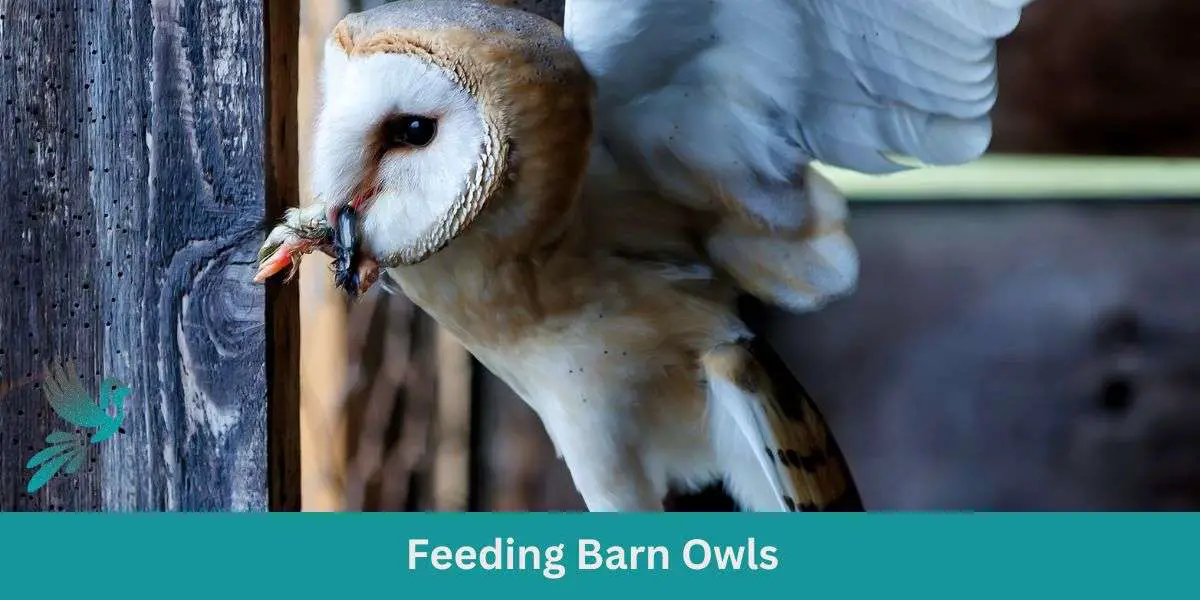Barn owls, those ethereal hunters of the night, have specific owl dietary requirements that fuel their nocturnal escapades.
Whether you’re a bird enthusiast, a wildlife rehabilitator, or someone who’s stumbled upon a barn owl in need, understanding what and how to feed these raptors is paramount.
In this guide, we’ll delve into the dietary preferences and feeding practices for barn owls, ensuring they get the nourishment they require.
Key Takeaways
Dietary Staples:
- Natural Prey: The natural diet of barn owls predominantly consists of small mammals. Rodents, especially mice and voles, are their primary food source. In some regions, they might also prey on shrews, bats, and small birds.
- Whole Prey: When feeding barn owls in captivity or during rehabilitation, it’s crucial to provide whole prey. This is because owls eat their prey whole and later regurgitate the indigestible parts, such as bones and fur, as pellets. These pellets play a vital role in the owl’s digestive process.
- Frozen Prey: For those caring for barn owls, frozen mice or chicks can be bought from specialized suppliers. Always ensure they are properly thawed before feeding.
Feeding Tips:
- Frequency: Adult barn owls typically eat 3-4 small mammals a night, while younger, growing owls might require more. It’s essential to monitor the owl’s health and weight to adjust feeding as needed.
- Safety First: Use tongs or gloves to offer food to the owl, ensuring your safety and minimizing stress to the bird.
- Supplements: If you’re rehabilitating an owl or caring for it over an extended period, consider consulting with a veterinarian about potential dietary supplements to ensure the bird’s health.
Note on Water: Barn owls typically obtain most of their water from their prey, but they do drink occasionally. Ensure a shallow dish of fresh water is available if you’re providing care.
Natural Diet of Barn Owls
Barn Owls have a natural diet consisting mainly of small mammals such as Field Voles, Common Shrews, and Wood Mice. These tiny creatures make up the majority of their food intake, providing them with the necessary nutrients they need to survive.
Field Voles, in particular, are a favorite of Barn Owls due to their abundance and easy availability.
When it comes to feeding Barn Owls in captivity or as part of conservation efforts, there are several food options available. One common option is using dead day-old chicks from the poultry industry. These chicks are often surplus and can provide a good source of nutrition for the owls.
Another option is obtaining rats or mice from pet shops, which can be used as a substitute for their natural prey. Occasionally, small birds or frogs can be offered to add variety to their diet.
Foods to Avoid
While there are many suitable food options for Barn Owls, it is essential to know which foods to avoid. Wild rats, for instance, may carry diseases or parasites that could be harmful to the owls. Pigeons should also be avoided as their larger size may pose a choking hazard.
Rabbits and any foods that have been shot should be excluded from their diet. It is best not to feed them foods that have been frozen for more than three months, as the nutritional value may have degraded.
Feeding Quantity for Adult Barn Owls
The feeding quantity for adult Barn Owls can vary depending on factors such as their activity level and overall health. On average, an adult Barn Owl may consume 1½ to 2 dead day-old chicks per night. This amount provides them with the necessary energy to sustain their daily activities and ensure their well-being.
How do these dietary habits affect their hunting techniques? Our Barn Owl Hunting section delves deep. For understanding how these habits change with seasons, consult Barn Owls in Winter. Central to all this knowledge is our cornerstone content on Barn Owl.
Feeding Wild Barn Owls during Food Shortage
During periods of food shortage in the wild, feeding Barn Owls can be a challenging task. It is important to approach this situation with caution, as providing additional food may lead to unwanted disturbances.
In some cases, obtaining a license or permit may be required to ensure the well-being of both the owls and their natural habitats. It is crucial to assess the situation carefully and seek guidance from wildlife experts to determine the best course of action.
Feeding fully grown wild Barn Owls in artificial settings can be a practical solution, particularly if they roost in an enclosed space. Providing them with suitable food options and a safe environment can help ensure their survival.
However, it is important to note that this approach should only be considered after careful consideration and consultation with wildlife professionals to avoid any negative impacts on the owls or their natural habitats.
When feeding wild Barn Owls, it is essential to follow a regular schedule to mimic their natural feeding habits. Feeding should ideally be done at dusk, as Barn Owls are primarily nocturnal hunters.
Placing their food in a secure location is crucial to prevent scavengers from accessing the food intended for the owls. By adhering to a consistent feeding schedule and taking precautions to protect their food, the overall health and well-being of the Barn Owls can be maintained.
Supplementary Feeding of Wild Young in Nest
In extreme circumstances, it may become necessary to provide supplementary feeding to wild young Barn Owls in the nest. This situation may arise when the parent owls are unable to find sufficient food to nourish their offspring adequately.
However, it is important to approach this intervention with caution and seek professional advice or obtain the necessary license. Any intervention should prioritize the welfare of the owls and minimize disturbance to their natural environment.


Leave a Reply
You must be logged in to post a comment.